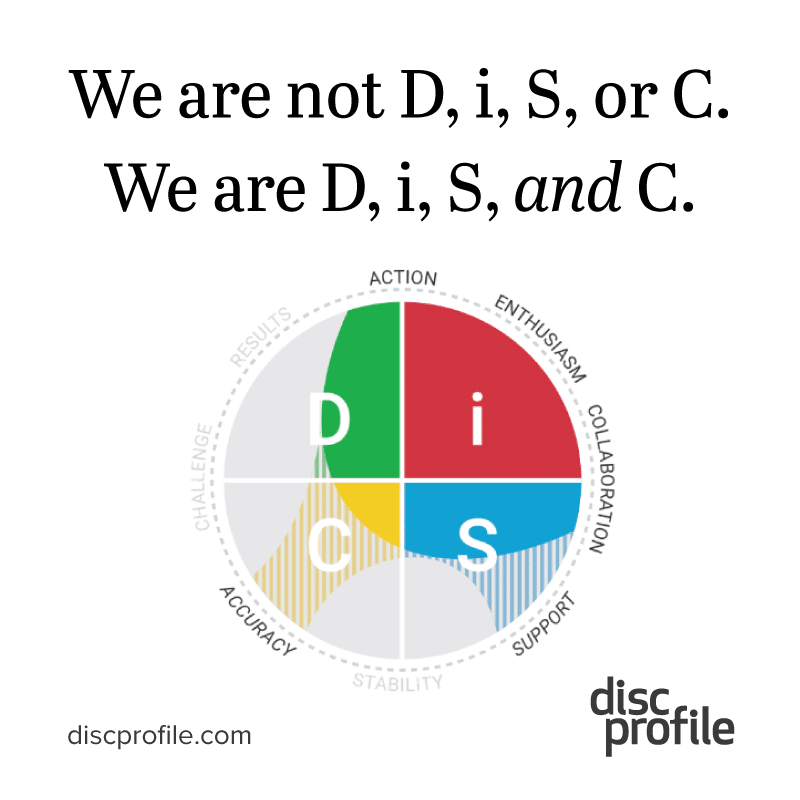Why is it helpful to know someone’s DiSC® style?
We make judgments about people as soon as we meet them. We can’t help it. These assumptions help us communicate and relate to others. DiSC helps you make better-informed judgments that you can refine as you learn more about a person. Reading someone’s body language, noticing their pacing, and listening for the types of questions they ask can all inform your reading of another. These initial hypotheses of style can help you provide better customer service or reduce someone’s stress.
We expect others to pick up on our social signals. If I check the time, that probably means I want you to finish talking. If I act excited, I’d probably welcome you joining me in expressing delight.
We naturally mirror the actions, dress, gestures, volume, and tone of others in order to show our affiliation or support of them. Why not consciously use this one aspect of behavior to be a bit more persuasive and build rapport with others?
Observable behaviors
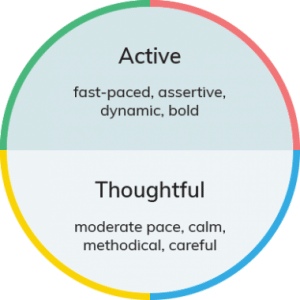 While humans do love to speculate on the motives and desires of others, DiSC only addresses observable behavior. Perhaps the easiest one to observe is pace. Does he seem in a hurry, does she interrupt, is he direct or blunt? Then we can speculate that this person’s priorities put them in the northern quadrant of the DiSC circle.
While humans do love to speculate on the motives and desires of others, DiSC only addresses observable behavior. Perhaps the easiest one to observe is pace. Does he seem in a hurry, does she interrupt, is he direct or blunt? Then we can speculate that this person’s priorities put them in the northern quadrant of the DiSC circle.
You have to listen and watch a bit more closely for the next pair of behaviors around agreeability. Does he act friendly almost immediately? Is she asking questions about who and how? Is he nodding or showing that he wants to welcome you or your ideas? Then we can assume this person is comfortable in the east quadrant of the DiSC circle.
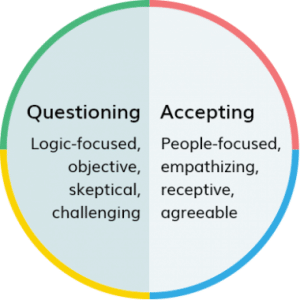
Examples
Subject A
Observed behaviors: Assertive, louder voice, big gestures, fast-paced
People-reading: Likely a D or an i
Observed behaviors: Questioning, results focused, direct, intentional
People-reading: Likely a D (not an i)
Possible responses: Let the conversation get loud without worrying that it signals anger, get to the point fast, suggest an action
Subject B
Observed behaviors: Soft voice, thoughtful and calm
People-reading: Likely a C or an S
Observed behaviors: Warm greeting, patient, curious about you
People-reading: Likely an S (not a C)
Possible responses: Keep the conversation diplomatic, show sincere appreciation, suggest getting others involved, offer reassurances
Summary chart
| DiSC style | Behaviors | Priorities |
|---|---|---|
 |
Direct Fast-paced Questioning Skeptical Firm Impatient |
Results Challenge Action |
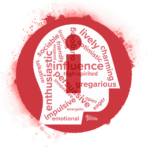 |
Expressive Fast-paced Sociable Accepting Enthusiastic Emotional |
Enthusiasm Action Collaboration |
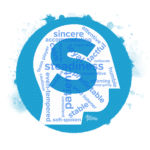 |
Friendly Accepting Warm Patient Empathetic Conforming |
Support Collaboration Stability |
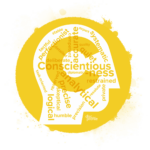 |
Questioning Analytical Thoughtful Cautious Reflective Stubborn |
Accuracy Challenge Stability |
Final caution
We are making assumptions. You can’t know one’s real style without an assessment. Sickness, stress, recent events, emotional intelligence, purpose, and other things can influence the style you observe. For example, people who meet me at small group functions often think I’m expressive and enthusiastic. For that time period and with that group, I am. But those are the behaviors I choose to display at that time.
We are all a collection of the four styles. We can all display behaviors more commonly seen in other DiSC styles. We just have to expend more energy to stretch into other styles. For example, after I’ve stretched into i-type behaviors with my small group, I’ll need to take some time by myself to recover. An i-style person who had to work in spreadsheets all day probably found it stressful and is now going to want to hang out with friends to recover lost energy.
People-reading is a first step to understanding another. You still need to confirm assumptions. People-reading is a way to begin a relationship, but to strengthen one you’ll need to learn much more about each other’s personality and character.
